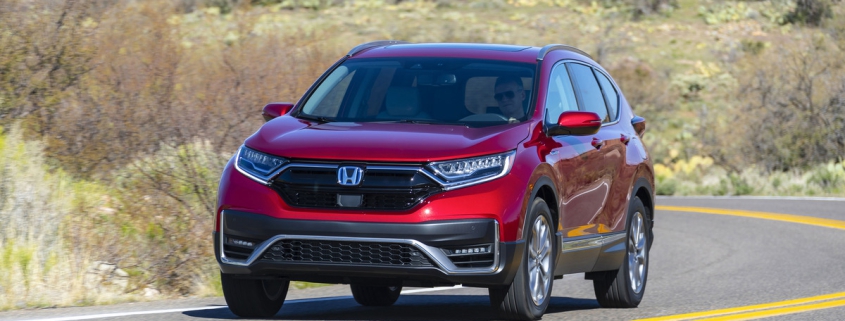Honda CR-V hybrid
Automakers who oppose the electrification of the automobile often argue (incorrectly, when looking at the numbers) that buyers are simply not interested in purchasing an electric car. These manufacturers tend to somewhat reluctantly sell their own electric vehicles, and one such manufacturer, evidently, is Honda.
Unfortunately, one only needs to look at the retail price of its electrified vehicles to understand why Honda is not very excited about the electric shift. The best example is its CR-V, offered in a hybrid version with a starting retail price of $49,000, which is $12,000 above the base price of the gasoline-only CR-V. Given the price difference, it’s no surprise that the hybrid version is much less popular…
Considering its price, one might wonder if its dual-powertrain system delivers enough performance to justify the premium, or at the very least, if it has what it takes to make this small SUV, which is becoming less small, attractive enough to justify a price of around $50,000.
Opinions on this matter will be divided. On paper, it seems fairly straightforward. The base CR-V is powered by a 1.5-liter turbo 4-cylinder engine that generates 190 horsepower and 179 lb-ft of torque. The hybrid engine, which consists of an electric motor paired with a naturally aspirated 2-liter engine, produces a maximum power of 204 horsepower and 247 lb-ft of torque.
All CR-Vs have a continuously variable transmission (CVT) and electronically controlled all-wheel drive. The hybrid CR-V also features a selector with four drive modes (sport, normal, eco, and snow), which the other versions do not have.
The good news is that all CR-Vs run on regular gasoline, despite the turbo. Honda’s average fuel consumption is 8.4 liters per 100 kilometers for the gasoline models and 6.4 liters per 100 kilometers for the CR-V hybrid. Of course, in real life, it’s a bit different. Expect to consume closer to 9 to 10 liters per 100 kilometers driving the CR-V, and if you opt for the hybrid, it will be closer to 8 to 9 liters per 100 kilometers.
Therefore, if you are quick with mathematics, it can be said that the hybrid engine doesn’t offer much more and isn’t essentially worth the $12,000 extra it costs.
Of course, one would hope that the additional equipment on this version of the CR-V compensates for the premium, but here too, one is somewhat disappointed. It has wireless CarPlay and Android Auto, rather than USB connection, and a multimedia system with a 9-inch screen combined with 12 Bose speakers, instead of a system with 6 or 8 speakers.
The front seats are electrically adjustable in the hybrid, similar to the fully equipped EX-L version, and you can opt for perforated leather with very chic orange accents.
But nearly $50,000 for all that, in our humble opinion, is a steep price. Perhaps even too expensive for an SUV that is supposed to be a more or less entry-level model. One may remember the CR-V from another era when this model, along with the Toyota RAV4 and Suzuki Vitara, was one of the smallest family vehicles sold in Canada.
Who knows. But at $50,000, it’s understandable why the CR-V hybrid is not convincing anyone that electrification is worth it.
The text Honda CR-V hybrid is from L’annuel de l’automobile – Actualité automobile



